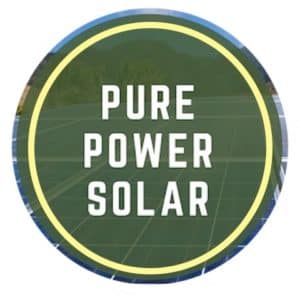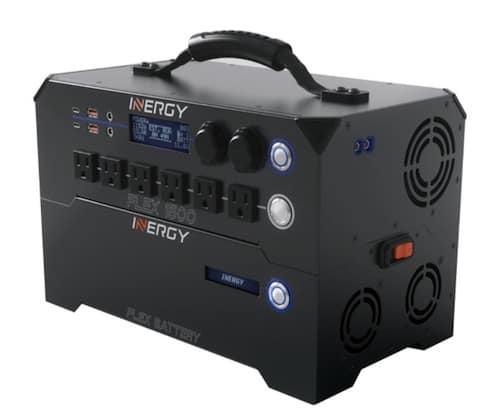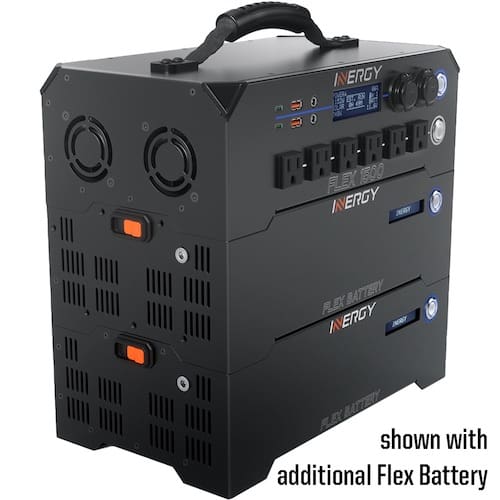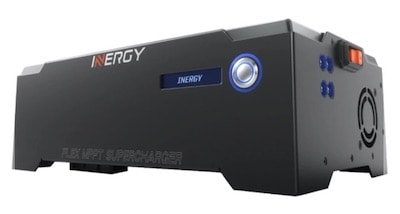As solar and battery industries continue to improve daily with new technology, off-grid power capabilities are becoming easier to come across.
Combining solar technology with high-powered batteries is the foundation of portable solar generators, and this way of generating power is becoming more common – even competing with portable gas generators.
Inergy is a company that harnesses the power of solar and battery technology to create lightweight solar generators for several off-grid power needs.
Their second solar generator release is called the Apex, which we’ll be reviewing today.
The Inergy Apex is an 1,100Wh portable power station weighing 25 lbs in total. It features an MPPT charge controller, six AC outlets, and several 12V DC outlets. With 500W of maximum solar input, the Apex can recharge in about three hours.
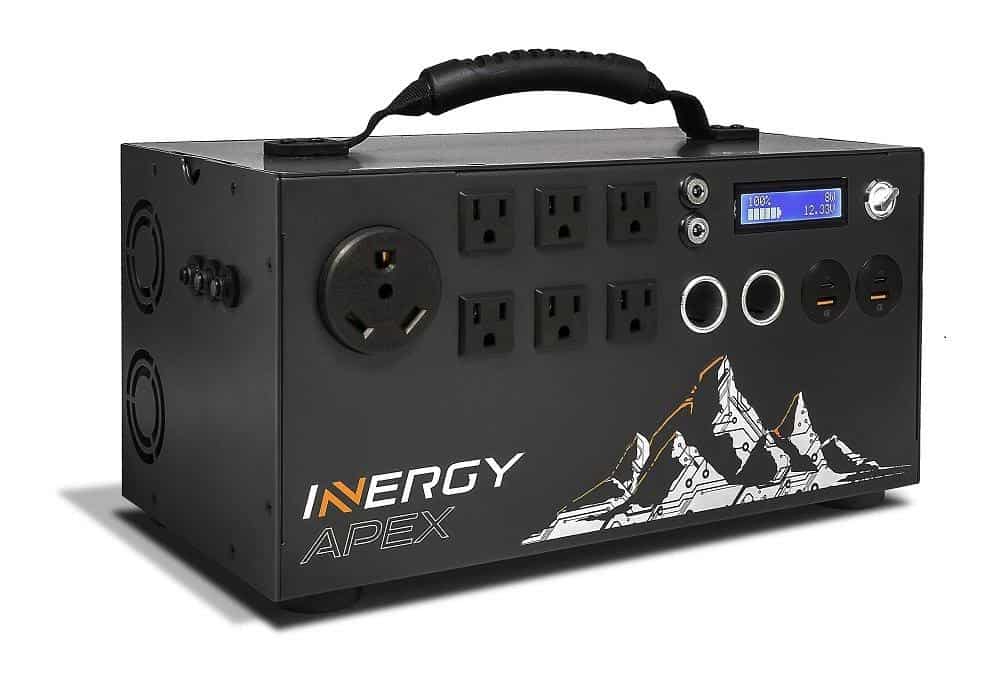
Featured in this article are various features, dimensions, and power statistics of the Apex.
I’ll also be comparing it with some of its competition, the Yeti 1000, Yeti 1400 and Yeti 3000 solar generators.
Please note that the Apex has been discontinued from Inergy. Some models may still be available for purchase from other vendors. Inergy has since created the Flex solar generator as the Apex’s successor.
I’ll be comparing the Apex and Flex later on in this review.

The Apex generator has the exact same dimensions on the outside as Inergy’s first solar generator, the Kodiak, at 14″ W x 7″ H x 8″ D.
This is slightly heavier than the Kodiak by five pounds, mainly due to the newly-added MPPT controller. More on that later.
As the YouTuber, Canadian Prepper put it, “It’s like the difference between the iPhone 8 and iPhone 9.”
This means that there are many similarities between the few years’ old Kodiak and Apex, however, there are some major improvements in the Apex, which makes it more usable for RV users, boaters, campers, and many others.
Besides the generator being the exact same dimensions, it also has the exact same battery in it as the Inergy Kodiak (1.1 kWh), which is still very impressive, especially for the weight of the generator.
Also, the Apex has the same look and very similar inputs and outputs from the previous model.
Similar: Your Next Solar Generator – The Complete Guide
Inergy Apex vs Kodiak: What Is Different?
- MPPT Controller: The Apex uses an MPPT whereas the Kodiak used a PWM controller. MPPTs are the better controllers of the two.
- Updated Display Screen
- External Lithium Batteries: The Apex can expand its battery capacity with Inergy Flex batteries
- EC8 Connection: Charging is achieved via an EC8 connector
The Apex has a Multitude of Features
Inergy listened to their customer base and helped solve a big problem, which happened when people were charging their generator with solar panels and couldn’t figure out the exact amount of Watts that were coming into the power station to charge it.
Charging & Power Options in the Apex
You can charge the generator from solar panels, your car, and your wall outlet in a pretty fast manner compared to the competition.
Solar charging is a major asset to this generator, as it will charge in three hours with 500W of solar panels in good sunlight.
This is amazing in the solar generator world and Inergy has really set the bar high with their charging times.
As for car charging, the Apex will be able to charge up in about 4.5 hours at 240 watts. Wall charging with 110 watts will take eight hours.
What Can You Use the Apex With & for How Long?
Here are some examples from Inergy’s website on the estimated charge and run times of various appliances and devices:
- Smartphones (5-7W): 100+ hours
- Tablets (25-40W): 40+ hours
- Laptops (50W): 20+ hours
- Electric Blanket (75W): 14 hours
- 50″ LED LCD TV* (65W) : 16 hours
- Microwave (1,000W): 1 hour
- Refrigerator* (150W): 33 hours
- Chest Freezer: 50 hours
- Sump Pump (1/3 HP): 2.5 hours
- Basecamp LED Light (6W): 183 hours
Apex Battery Performance
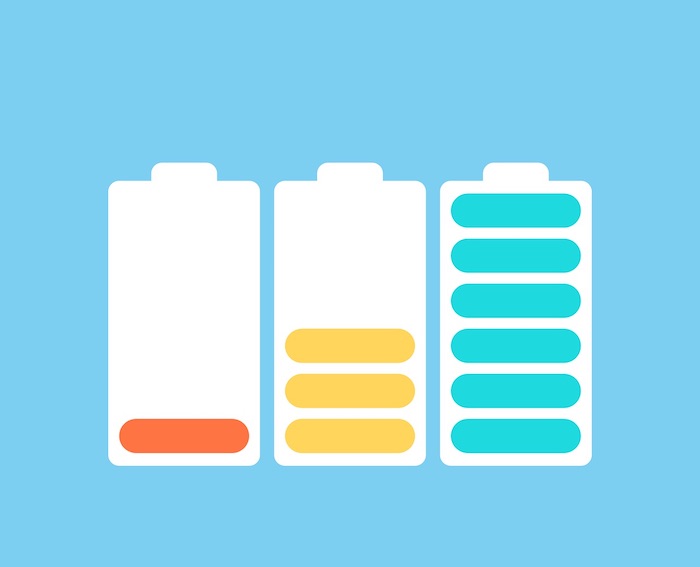
The battery is the same size as the Inergy Kodiak, at 1,100Wh (1.1kWh).
Also, the battery no longer needs “resets” as opposed to Kodiak, where if you had a low battery and tried to use a power tool or appliance with a lot of surge power, it would need to be reset by doing a strange sequence with plugs.
Now, the Apex automatically shuts down if you surge the power when there’s a low battery in order to protect the battery and give it longevity.
The battery will last up to 2,000 charge cycles, which, when you do the math, is actually saving you money compared to most other generators out there that do not have as many charge cycles.
Inergy Apex Overall Stats
| PRODUCT SPECS | POWER SPECS | WHAT CAN IT POWER? |
|---|---|---|
| Charging Temperatures: 32°F to 104°F | Internal Battery: 1,100 Watt hours (90 amp hours, 12.6 volts), Lithium NMC | Smartphones (5-7 watts): 100+ hours |
| Discharging Temperatures:20°F to 115°F | Battery Life Expectancy: Up to 2,000 Cycles or 10 Years, 4 times longer life compared to any competitor | Tablets (25-40 watts): 40+ hours |
| Dimensions: 14″ W x 7″ H x 8″ D | AC Inverter: 1,500 Watt pure sine wave, 3,000 Watt starting surge | Laptops (50 watts): 20+ hours |
| Weight: 25 lbs | Charging: 500 Watts max input, 3 hour recharge time | Electric Blanket (Queen Size, 75 watts): 14 hours |
| Warranty: 1-Year | Battery Expansion: Yes. Apex accepts Inergy’s external Lithium-Ion (coming early 2020), 12V lead acid or AGM deep-cycle battery | 50″ LED LCD TV* (65 watts) : 16 hours |
| Shoulder Carrying Strap | MPPT Charge Controller: Allows for faster and more efficient charging | Refrigerator* (18 cu ft., 20% duty): 24 hours |
| Standard Wall Charger Included | USB-C Charge Ports | Chest Freezer (9 cu ft., 15% duty): 50 hours |
| USB Qual Comm 3.0 Charge Ports | Sump Pump (1/3 HP): 2.5 hours | |
| 3-Position Power Switch: Allows user to charge devices via the USB, USB-C, and 12V output ports without having to turn on the inverter | Basecamp LED Light (6 watts) : 183 hours | |
| EC8 Input Plug: Creates an extremely user-friendly, plug and play interface | ||
| Compatible with EC8-to-MC4 Adapter | ||
| NOT Compatible with MC4-to-Neutrik Adapter |
Inergy Apex & External Batteries
An impressive feature in this generator is the ability to hook up external lithium-ion batteries to the Apex.
You can also use the standard 12.6 deep-cycle lead-acid/AGM batteries as well with the connections given on the outside of the generator.
Hooking up an external battery to the Apex will let you have more power (obviously) but will also give the Apex the ability to charge and discharge power from the external battery.
The lithium-ion external batteries will be released by Inergy very soon, and are also the only lithium-ion batteries allowed for use with the Apex under the warranty, which is a one-year policy.
Some new features have been added to the Inergy Apex, including an MPPT controller.
This will increase the charging efficiency and decrease charging times from solar panels – as compared to one without an MPPT (the Inergy Kodiak).
Pros & Cons of the Apex Solar Generator
Pros:
- MPPT controller – Improved efficiency
- Massive power output (1,100Wh) and surge (3,000W)
- The most power per pound compared to other portable solar generators
- Lithium-ion external battery connections
Cons:
- Five pounds heavier than the Kodiak (25 as opposed to 20)
- EC8 plugs instead of an MC4 adapter are used to connect the solar panels to the Apex
EC8 plugs are not waterproof or UV resistant.
Inergy made this move because people were burning out their Kodiak generators with too many solar panels attached to the generator.
Now, these plugs are used to prevent that from happening. There are several more pros and cons to the Apex, but the main ones are listed here.
Inergy Apex vs Flex
Between the Inergy Apex and Flex solar generators, the better of the two is the Flex. This is due to the Flex’s scaleable battery capacity and solar input.
Up to 96 Flex batteries can be connected to one Flex power module. With one Flex MPPT Supercharger, the maximum solar charge input is 1,200W.
| Generator | Inergy Apex | Inergy Flex |
|---|---|---|
| Battery Capacity | 1,100Wh | 1,069+Wh |
| Charging Management System | MPPT | MPPT |
| Power Output | 550W continuous, 850W surge | 1,500W continuous, 3,000W surge |
| Weight | 25 lbs | 30 lbs |
| Size | 14" x 7" x 8" | 14” x 8” x 9.4” |
| AC Outlets | Six | Six |
| Max Lifecycles | 2,000 cycles | 2,000 cycles |
| Battery Type | Lithium-Ion | Lithium-Ion |
| RV Connectivity | Yes | No |
Battery Capacity – Apex vs Flex
The Inergy Apex has a battery capacity of 1,100Wh.
This is a sizable amount of stored power as it can power your 50″ LCD television for 16 hours. You can power a 19 cubic foot refrigerator and a nine cubic foot chest freezer with this power station for 33 and 50 hours, respectively.
Apart from these larger appliances, small gadgets like phones, tablets, and camp lamps will get 100+, 40+, and 183 hours of power, respectively. Without a doubt, this power station has impressive battery capabilities.
On the other hand, the Inergy Flex power station has a 1,069Wh capacity.
Naturally, it is less than that of the Inergy Apex.
However, the Flex features a modular design, allowing it to house as many as 96 Flex batteries to its power module.
This allows the Flex to be much more versatile and powerful than the Apex as more batteries are added to the system.
With one Flex battery, the power station can adequately power a typical 7 cubic foot freezer for 32 hours and a 20 cubic foot freezer for 22 hours.
Your 50″ LCD television will get 12 hours of power, and your laptop can get 20 full recharges with this power station.
As you add more batteries to the generator, the run times get exponentially higher.
Verdict
The Inergy Apex has a slightly higher initial battery capacity than the Inergy Flex.
However, with two or more batteries attached to the Flex, you’ll be able to run appliances for much longer periods than the Apex.
The Flex is the clear winner in terms of battery capacity.
Size and Portability of Inergy’s Apex and Flex Power Stations
The Inergy Apex measures 14 x 9 x 8.9 inches and weighs about 25 pounds. While 25 pounds is a sizable weight in itself, in the solar generator world, with these dimensions, this is a very light system.
A power station at this weight is relatively easy to move around and handle. You should not have a problem using it for outdoor/camping purposes.
The Inergy Flex measures and weighs almost the same as the Inergy Apex. The power station measures 14 x 8 x 8.9 inches in size and weighs 30 pounds.
Verdict: With one battery attached to the Flex, the Apex is five pounds lighter. The Apex is slightly lighter than the Flex, making it more portable.
Similar: Top 6 Solar Generators for Power Tools – Power Ratings & More
Charging Mechanism & Duration of the Apex & Flex
The Inergy Apex’s three charging approaches take different durations. The fastest way to charge the Inergy Apex is through the use of solar panels.
The power station allows for as much as 500W of solar input, which means that if you combine five 100W solar panels, you can fully charge the power station in as little as 2.2 hours.
However, this duration is only attainable in perfect weather conditions. And as perfect conditions are rare in most cases, the realistic duration for fully charging the power station with 500W of solar is five to six hours.
This duration is still the fastest as the wall charging takes about 14 hours to fully charge the power station. The use of a wall charger only inputs 80W of electricity, thus the 14-hour timeframe.
However, there is a Quick Wall Charger for the power station, and this charger doubles the charging speed, so it takes seven hours to fully charge the power station.
It is important to state that the solar generator has an MPPT charge controller. This technology ensures the highest efficiency of the charging process.
The Inergy Flex has the same three charging methods as well.
One of the amazing charging features of the Inergy Flex is the fact that you can combine the three methods of charging at the same time. This combination will fully charge your power station in one hour with one battery.
Moreover, there is a Flex Supercharger which adds additional MPPT charging technology with this power station.
The Supercharger drastically improves charging times and allows the Flex to charge with up to 1,200W of solar panels as opposed to its standard input rating of 400W.
Verdict: The Flex outshines the Apex in this regard. The Flex has more charging methods and a shorter charging duration, enabled by combining the three charging methods together.
Inverter Size – Is the Inergy Apex or Flex More Powerful?
The inverter flows power from the battery to the AC ports and is essential to a solar generator.
Both power stations have an inverter of the same continuous and peak power. Their powerful, pure sine wave inverters are rated at 1,500W continuous with a peak power of 3,000W.
However, as stated before, the Apex is only capable of utilizing one-third of the inverter’s capabilities. Although this is the battery’s issue, it is still extremely important to understand this fact.
Verdict: There is no difference between the inverters of the two power stations as they have the same ratings and capacity.
Similar: Gas vs Solar Generators – Which Makes More Sense?
Does the Inergy Apex or Flex Have RV Connectivity?
The Inergy Apex has a 30-amp RV port. This port allows users to connect the power station to a travel van, RV, or trailer. The Flex does not have this feature.
Verdict: The Apex is the clear winner here by default.
Number of Ports on the Apex and Flex Solar Generators
The two power stations share a similarity in the number of ports available on the power stations.
Both power stations have six AC outlets, two cigarette outlets, two Type-A USB ports, two Type-C USB ports, and two 5.5mm x 2.5mm outputs for Inergy accessories.
However, there are two differences in ports to consider. The first is that the Apex can connect to third-party external batteries when the Flex is only designed to be able to connect to its proprietary ones.
The second difference is that Inergy has a second Flex solar generator called the Flex 1500 DC.
This system has twice as many DC ports as the Flex AC unit, with four USB-A, four USB-C, four 5.5mm x 2.5mm ports, and four cigarette ports.
It also has two Anderson PowerPole output ports. However, all of the AC ports are removed, hence the Flex “DC” title.
Verdict: The Flex comes out on top in this comparison due to its AC and DC versions, allowing the generator to cater to customer needs.
Conclusion – Apex vs. Flex
Having compared these two power stations, it is safe to say that they are both quality products and a wise purchase for anyone looking to invest in a solar generator.
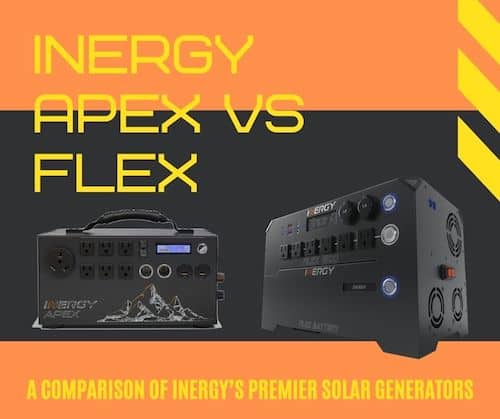
The difference between them is minimal unless you decide to expand the Flex generator with more batteries and/or the MPPT Supercharger.
The Flex DC version is drastically different when comparing ports.
But one of the most distinguishable attributes that sets the Flex on top over the Apex as the winner is its ability to use the inverter to its full capacity.
Inergy Apex vs Goal Zero Yeti 1000 – Which Ranks #1?
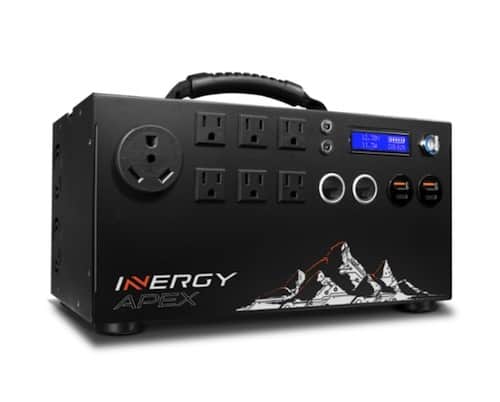
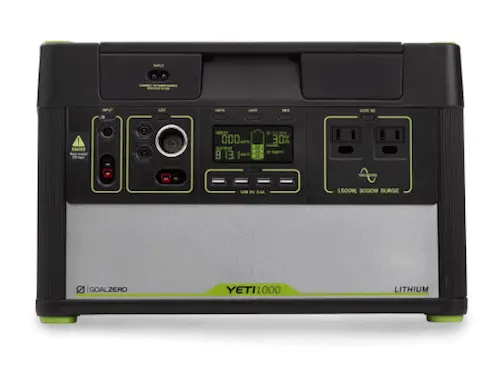
The best generator out of the two is the Inergy Apex. This is because the power-to-weight ratio of the Apex is much higher than the Yeti 1000. Also, the battery life expectancy of the Apex is four times higher than the Yeti, at 2,000 cycles.
Inergy Apex vs Goal Zero Yeti 1000 - Stats & Specs
| Inergy Apex | Yeti 1000 | |
|---|---|---|
| Peak Capacity | 1100Wh (12.6V, 90Ah) | 1045Wh (10.8V, 96.8Ah) |
| AC Inverter | 1500W Pure Sine Wave, 3000W Surge | 1500W Pure Sine Wave, 3000W Surge |
| Charge Controller | MPPT | PWM |
| Input(s) | EC8 | 8mm, Power Pole |
| Price | $1,250.00 | $1,199.95 |
| Weight | 25 lbs | 40 lbs |
| Internal Battery Type | Lithium NMC | Li-ion NMC |
| Life Cycles | 2000 Cycles | 500 Cycles |
| Dimensions | 14" x 7" x 8" | 10.1" x 15.3" x 9.3" |
| Max Solar Intake | 500W | 360W |
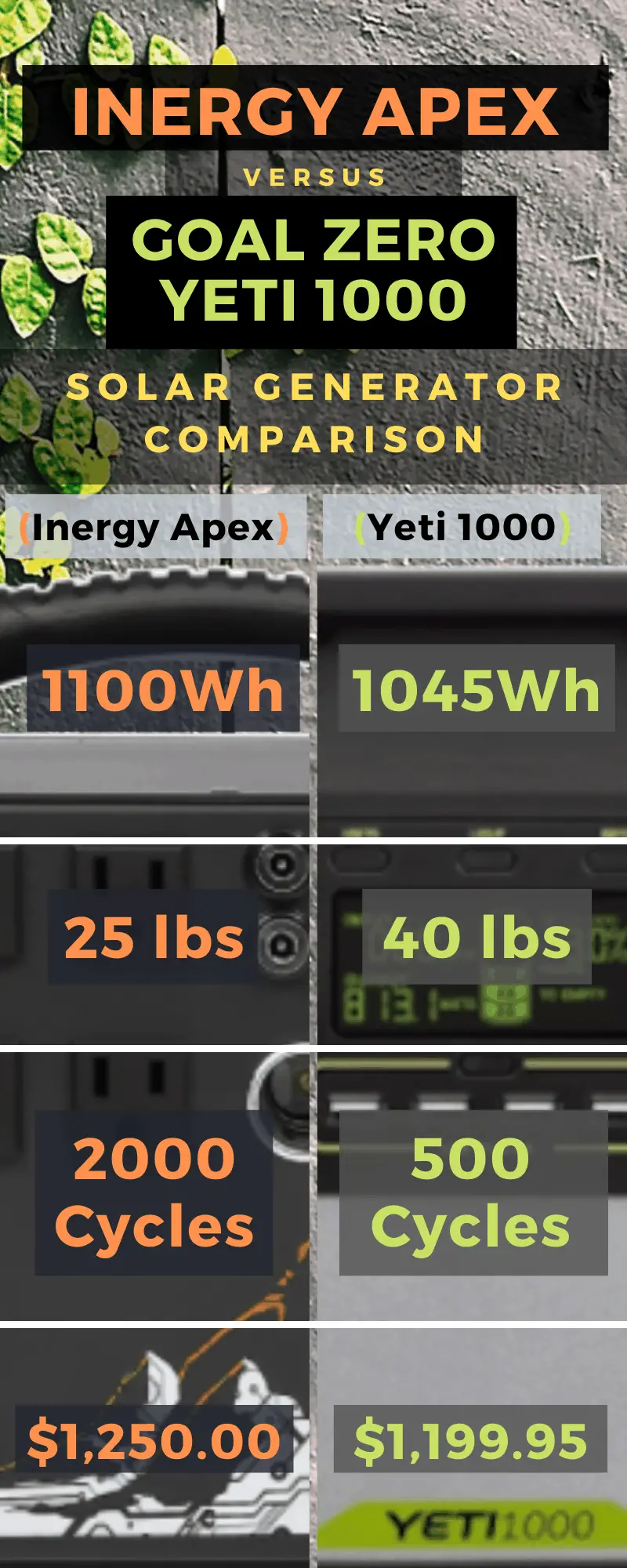
Inergy Apex vs Goal Zero Yeti 1400 Lithium
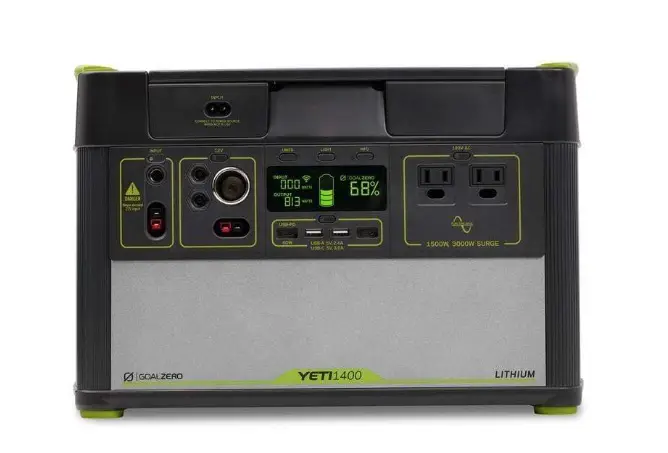
The Yeti 1400 Lithium has the following features compared to the Apex:
- Heavier: 43.7 lbs
- More Expensive: $1,899.95
- Longer Charge Times: 4.5 hrs from solar (360W) and 25 hrs from the AC charger
- Lower Cycle Life: 500 to 80% capacity
- WiFi-enabled (Apex is not)
- More Powerful: 1,500W, 3,000W surge
In addition, the Yeti 1400 has a much better display screen than the Apex, allowing you to review input and output data, battery charge status, and more.
Although it doesn’t have much more information available than the Apex, the general aesthetic is more pleasing to look at on the Yeti 1400.
Overall, the Apex is more portable than the Yeti 1400.
Although the Yeti has more battery capacity and inverter strength than the Apex, both of these factors add to its weight, making it nearly twice as heavy as the Apex.
Similar – Goal Zero Yeti 1500X Review
Inergy Apex vs Goal Zero Yeti 3000 Lithium
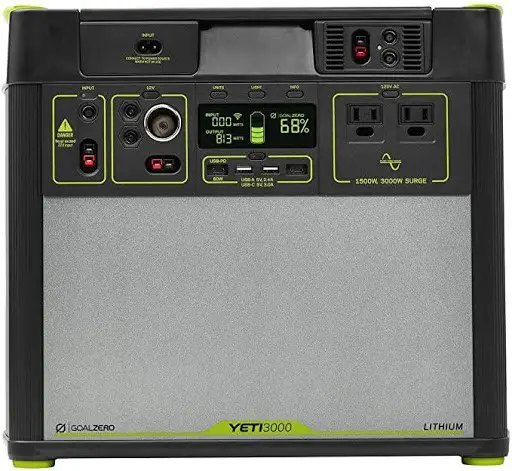
The Goal Zero Yeti 3000 is a beast of a generator, so how does this model compare to the Apex in terms of the following?
Check out this comparison chart that compares a few important qualities to look for when looking for the right solar-powered generator:
| Model | Yeti 3000 Lithium | Apex |
|---|---|---|
| Less Expensive | X | |
| Longer Battery Life | X | |
| Power Output | X | |
| Faster Recharge | X | |
| Lighter Weight | X |
Although the inverter capabilities of both of these generators are equal, the actual output from the AC ports is greater for the Yeti 3000 Lithium.
The Apex’s continuous discharge is rated at about 550W. It can run devices over 550W, but it is not recommended for long periods of time.
When looking for the right generator, you need to look at what you’re mostly going to use it for.
For RV use, the Apex is better because of easy mobility. You can take it outside or move around the RV without much trouble.
On the other hand, if you’re wanting to get a generator for backup power for appliances and electronics within your home, then the Yeti 3000 will probably outweigh the Apex because it can produce power for a longer duration AND it is WiFi-enabled, allowing you to monitor the use of the generator.
Read my full review of the Goal Zero Yeti 3000 Lithium here.
Solar Panels Offered by Inergy:
The Linx solar panels are 100 watts each and are semi-flexible as well. They are the new and improved version of the Solar Storm panels from Inergy.
Both are rated at 100W, which is the standard size for a mountable solar panel for a rooftop, car, shed, or any other flat surface with easy access to the sun.
What Are the Benefits of Having Linx Panels vs Solar Storm Panels?
There are two main differences. The first is that the Linx panel is made of monocrystalline, which is made with a higher grade of silicon thereby improving the efficiency of the solar panel. In addition, the Linx panels are half of the weight of the Solar Storm panels.
Polycrystalline, which is what the Solar Storm panels are made of, is made with lower grade silicon and reduces the efficiency of the solar panel by a small percentage.
From 16.2 pounds to an 8-pound panel is a feat within itself for Inergy and can help you transport your solar panels much more easily, especially if you have a bunch of them.
Inergy’s Role in Giving Back to the Community
Inergy has given back to communities in need in various ways within the last couple of years.
When a large storm comes in, it could ravage a city and the surrounding areas. In the case of Puerto Rico with Hurricane Maria, the storms came through and ravaged their land.
In response to this horrid event, Inergy donated several of their Kodiak solar generators to families that needed the machines to help keep them and their families alive.
Overall, Inergy has donated over $350,000 in products thus far to families in Puerto Rico and Haiti.
Frequently Asked Questions
Can you use the Apex generator while you are charging it?
- Yes, you can! We recommend using as much of your power output requirements while charging to offset output loads.
If you attach an external battery, will it be charged when the generator is charging? Or should the external battery be charged separately?
- The external battery will be able to be charged alongside the internal battery.
Does this have built-in surge protection?
- Yes, the Apex has a built-in charge controller.
What’ the current from the RV plug?
- The RV Connector Type is a 30 Amp RV 110 – Nema TT-30R.
Where can I find the user manual for this?
- You can find it right here: Inergy Apex User Manual
For more details on the Apex, check out my video below.
